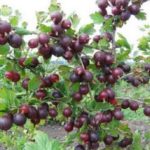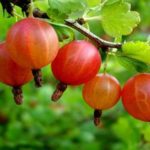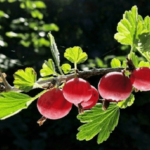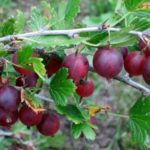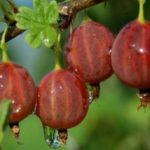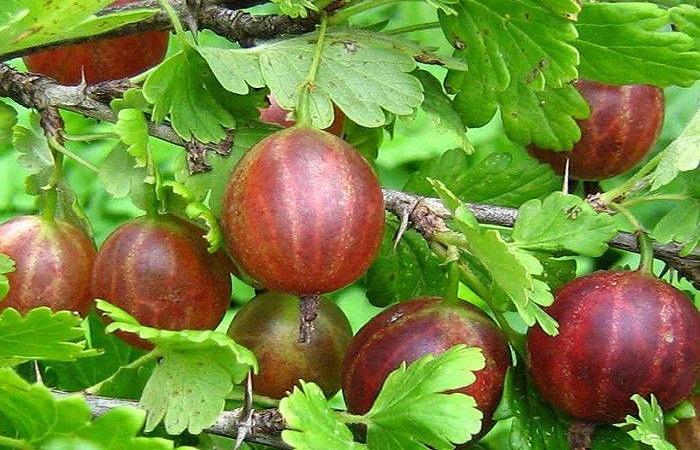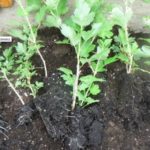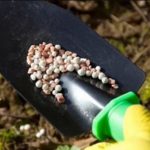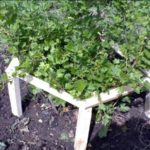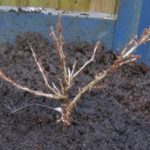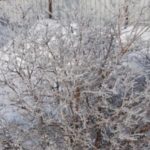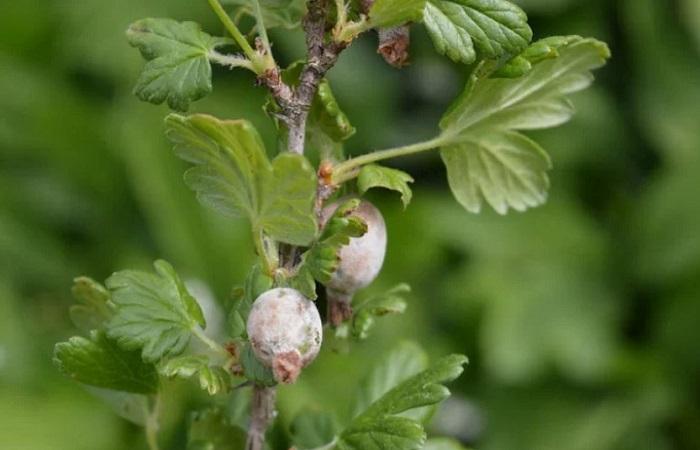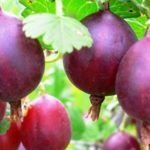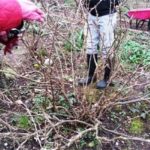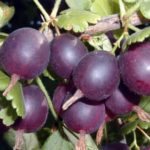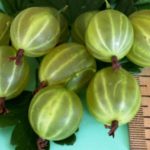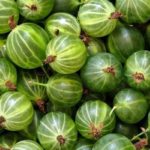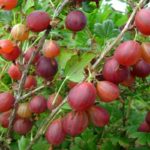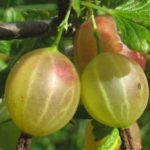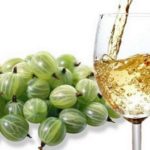For planting in their garden plots, gardeners often choose thornless varieties of gooseberries, which makes harvesting easier. In addition, when choosing a crop variety, attention is paid to the plant’s resistance to fungal diseases, in particular powdery mildew. The description of the gooseberry variety Captivator states that the bush annually produces good yields of tasty berries and does not require complex agrotechnical care.
History of selection
The thornless gooseberry variety Captivator was bred by Canadian breeders in Ottawa.The varieties of culture Clark and Spinfree were taken as a basis. Thanks to the work of scientists, a hybrid has been created that is resistant not only to powdery mildew pathogens, but also to extremely low temperatures. Registration of a new variety was recorded in 1984, and despite the emergence of newer gooseberry varieties, Captivator is still popular with gardeners around the world.
Description of the variety
The Captivator variety is perfect for small garden plots, where every meter is worth its weight in gold. The fact is that the bush grows in height, not width, and it does not need large areas for full development. The absence of thorny thorns on the bush allows you to harvest without problems and without injuring your hands.
At the very beginning of the growing season, juvenile thorns form on the shoots, but by the time the berries are ripe they practically disappear. The gooseberry spends the first 3 years of its life growing branches, and only after that it begins to fully bear fruit. The peak yield is observed in the 5-6th year of development, and the number of fruits remains at the same level until the end of the bush’s life.
Thanks to the average yield of the crop, 2 bushes are enough to eat berries during the season and make winter food for the whole family.
Characteristics of culture
General characteristics of the variety as indicated by the breeders:
- The fruits have a universal purpose - they are consumed fresh and made into twists for the winter.
- The height of the bush reaches 1.6 meters, the shoots bend under the weight of the crop, so it is recommended to install supports.
- The hybrid variety has strong immunity to pathogens of powdery and downy mildew, as well as other fungal diseases.
- From year to year the bushes produce a stable harvest, despite the vagaries of the weather.
- The gooseberry peel is dark red and turns burgundy when fully ripe.
- The berries are sweet and sour to taste; if you eat them fresh, you will have to sweeten them a little.
- The weight of the tear-shaped fruit is from 4 to 6 grams.
- The variety is self-fertile, so there is no need to plant pollinators nearby.
- Gooseberry Captivator tolerates harsh winters well, so it can be grown even in the northern regions.
Advantages and disadvantages
Owners of their personal plots, who have been growing this variety for years, have identified several significant advantages of Captivator. They included the following benefits of gooseberries:
- original taste and beautiful appearance of berries;
- absence of prickly thorns;
- high winter hardiness and immunity against powdery mildew;
- simple agrotechnical care of shrubs and their compact size;
- stable yield for several years;
- no need for pollinators.
As for the disadvantages, before purchasing seedlings you should pay attention to the following:
- poor growth and development on light soils;
- the need for constant irrigation.
Planting and further care of gooseberries Captivator
To plant gooseberry bushes, select a place that is well illuminated by sunlight throughout the day; it is also possible to plant the variety in partial shade. The crop does not take root and bear fruit well in places with drafts and close groundwater. The soil is preferably well-drained, moist, slightly acidic, fertile.
Planting of seedlings is carried out following the following algorithm:
- There is at least 1.5 meters between holes, and the distance between rows is 2 meters.
- The roots of the bushes are soaked in cool water for 2 hours, and a root former can also be added to the water.
- The planting hole is made twice as large as the size of the gooseberry root system.
- A nutrient cushion is placed on the bottom, mixing the selected soil with humus.
- Cover the seedling with the remaining soil and water it abundantly (1-2 buckets per specimen).
Although gooseberries are planted in both spring and autumn, experienced gardeners recommend the second option. This is due to the fact that at low positive temperatures the plant’s root system adapts better to a new location.
After this, it is necessary to provide the crop with complete care, which includes watering, fertilizing, preventive treatments and preparation for winter.
The frequency of fertilizing depends on the appearance of the plants; if the bush looks healthy and strong, there is no need to fertilize it. Otherwise, use multicomponent mineral compositions or organic matter (manure, compost).
Be sure to prune bushes several times a season. In the spring, frozen and dry branches are removed, as well as all 3-year-old shoots. Before wintering, cut out diseased and broken branches.
There is no need for special shelter for the winter, since the variety is resistant to frost; before the first significant drop in temperature, the bush is treated with Bordeaux mixture and the branches are tied in the form of a dome.
Diseases and pests
Copper sulfate and Bordeaux mixture, as well as the drug Bitoxibacillin, are used as preventive measures.
Reproduction
The Captivator variety is propagated by cuttings or layering.
Harvest and storage
Gooseberries are harvested in mid-July; you can check the readiness of the berries by squeezing the fruit with your fingers; the pulp should be soft. In the refrigerator in plastic containers, gooseberries remain fresh for up to 2 weeks. It is also processed into jam or frozen for later use in baking.

